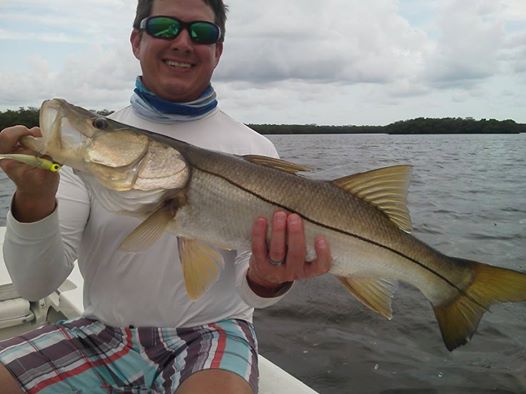
I admit it; one of my favorite “eating” fish is a snook. Certainly though, pompano has to be my top choice, and then possibly flounder, but snook? Well, a snook is just something different. Years ago, snook were called “soap fish” by anglers who rarely skinned fish before cooking them. Some just scaled them, gutted them, cut the fins and head off and cooked them pretty much whole. Most agreed, that when cooked like this, while palatable, Snook left a funny taste in your mouth, however, when the fish were filleted and skinned before cooking that funny taste disappeared and the snook became an instant favorite main dish.
With years of strict management of the Florida resource, snook began to flourish. Size and bag limits were tweaked to prevent over-harvest and allow more and larger fish of the species to remain in the fishery to create what became the most populous snook fishery in the country, and most certainly a world-class fishery for this prized game fish.
Nearly four years ago, a devastating freeze left snook reeling with the cold which killed off significant numbers of these fish. Many were breeder-sized fish, some were juveniles, but overall, the entire population of fish was reduced significantly throughout the state. It was enough that an emergency closure was instituted for several years to allow these fish to rebound.
Some areas saw many more snook killed than others. Fish that sought good water depth fared much better than those that remained in shallow estuaries such as Tampa Bay, Terra Ceia Bay, and some other famed spawning areas.
But regardless of what observations guides who fish some areas reported, the numbers of fish that scientists said were available deemed the fishery to be rebounded enough to reopen. In some areas, those numbers may very well be accurate, but in others, perhaps the minimal remaining population does not matter in the overall picture…to the scientists. But to some fishing guides, whose livelihoods depend on the fishery as a whole, in these areas the guides continue to ask their anglers to release snook even though the season for keeping snook has reopened. You can’t blame those who want to see this fish survive and replenish, and certainly, to keep the fishery closed would quicken its rebound to peak levels seen prior to the freezes. But as an economic value for some, the powers to be have seen fit to reopen snook for anglers to take home.
Because an anglers is permitted to take a fish, that doesn’t mean that they all will, but now they can legally do it. Some will do it because they just love the flavorful light delicate pure white fillets from these fish that can’t be found on any menu since its game fish status reigned. But to others like myself, it seems to be a personal choice—to kill or not kill a legal sized snook. Prior to the change from a minimum size keeper snook from 26 up to 28-inches, I would keep one fish per year personally. But with the larger slot minimum, I could no longer consume one entire fish before having to freeze a portion of it. My preference is for fresh fish, and not frozen, so I stopped keeping snook for myself.
For certain, the debate to keep this fishery open or to close it will go on. It seems we all love our snook, but perhaps we have to ask, do we love this fish to death? Something to think about…
We use cookies to enhance your experience on our website. You agree to our use of cookies when you continue to browse the site. Review our Privacy Policy for more information.
